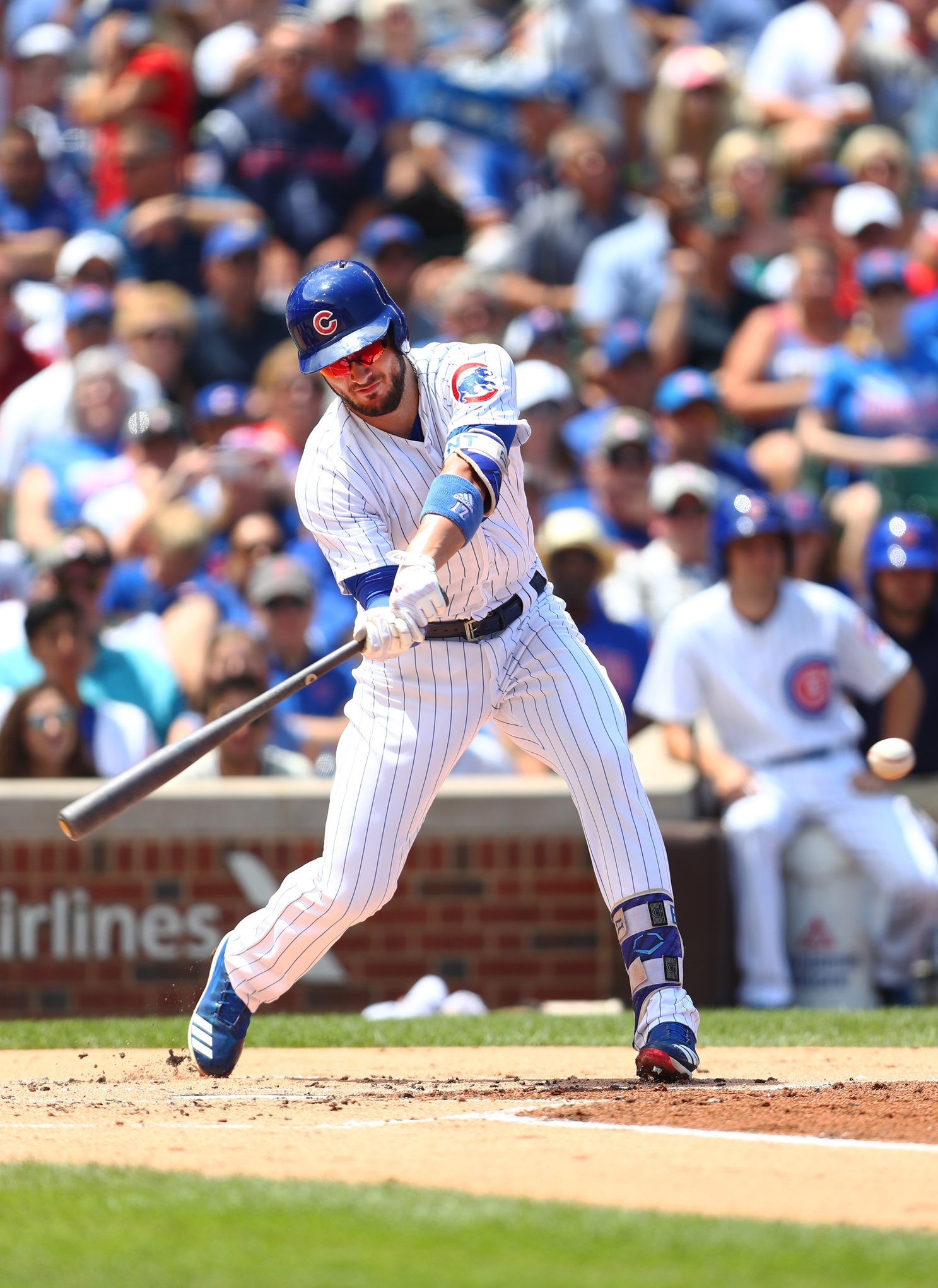On Friday, Kris Bryant tallied his tenth multi-homer game as a major leaguer, and his third this season. He reached ten in only 386 career games; for perspective, Anthony Rizzo has 14 in 836, meaning Bryant has outstripped Rizzo’s career rate of multi-homer games by about 60 percent. That’s just one indicator of Bryant’s impressive power, and Bryant is one again on pace for over 30 home runs.
Recently, Randy Holt detailed Bryant’s changes to approach and the results they have produced in 2017. Randy did a great job explaining Bryant’s improved plate discipline—Bryant is swinging less often at pitches out of the zone, and his overall contact rate has grown the second time in two seasons. That contact rate, a cause for concern in his first major-league season, is now 75.8 percent, just a hair below league average. And, finally, his strikeout rate has fallen a smidge and his walk rate is now up to 15 percent, a five-point increase from last year. Clearly, he’s found another gear in terms of plate discipline, and, combined with a few opposite field homers, he’s evolved once again as a hitter.
One would think that Bryant’s overall production is better in 2017 than it was last year, then. I’m not here to tell you that it’s unequivocally worse than last year, but several metrics point toward a slight slip in offensive production. Bryant’s True Average is down to .318, in line with his rookie year, but 32 points below last year’s great .350 mark. His slugging percentage is 20 points worse than last year, and, before Friday’s triple and pair of homers, it was even worse, just over .500. That’s obviously still a great player, and Bryant still has 18 home runs almost at the All-Star Break.
My suggestion, however, is that Bryant’s increased contact rate and attendant walk and strikeout rate changes have resulted in a slightly less powerful Bryant. His average exit velocity—which one should take with a grain of salt considering the juiced ball’s impact on this year’s numbers and Statcast’s various limitations—is over two miles per hour slower this season, now a fairly pedestrian 87 mph, whereas last season he had the twelfth-best mark in the league. His BABIP is now down around .300, significantly worse than his .332 mark from last year. Likewise, his hard contact rate is down, while is medium contact rate is up. He’s not hitting the ball with as much authority as last year, despite this year’s video game home runs numbers across the league, and the balls he’s putting into play are turning into hits less often.
Bryant is still fast, so it’s unlikely that his low BABIP is due to running poorly. His Baserunning Runs are in line with last year’s good numbers. Randy touched on quite a few of these numbers in his own piece, but I think with a much rosier perspective. As he concluded, though, it’s difficult to determine what exactly is driving Bryant’s lower BABIP and dip in hard contact. The game versus the Pirates the other day did quite a bit in the way of pushing his power numbers up, and that could just as easily be a sign of Bryant figuring out how to maintain the plate discipline while hitting dingers, as it could be a sign of this season merely being “very good” instead of MVP-caliber.
It’s easy to quibble over relatively small things in a great player’s well-rounded game, but I think it’s important to exercise caution regarding Bryant’s mutating approach. Bryant could absolutely turn the power back on, sock a bunch of homers in August and September, and end up near the top of the slugging and homer leaderboards; he’s a damn good player with a relentless appetite to improve. With the ball changing, and league-wide trends on the move in all different directions, it’s possible that Bryant has been adversely affected by a league that is again tipping the scales in favor of power. One could make a hackneyed analogy to a Frost poem at this point—this writer certainly will not do that—but Bryant appears to be at a minor crossroads. Is his MVP 2016 an early-career high point that he will fail to replicate, or is it the beginning of years of dominance that will put Bryce Harper on edge? After the All-Star Break, I feel like we will find out.
Lead photo courtesy Mark J. Rebilas—USA Today Sports
